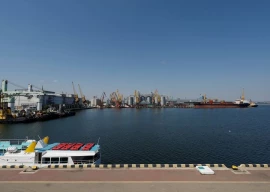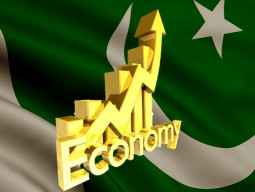
The foreign economic assistance from July through October this year stood at $2.95 billion, according to official statistics. However, the government obtained $2.2 billion or 75% of the total loans for non-productive purposes.
The $2.2 billion borrowings include $1 billion in Sukuk Bonds, which were floated by pledging the Lahore-Islamabad motorway in collateral, and $900 million from foreign commercial banks. Both these loans were aimed at meeting the needs of budget financing and forex reserves.
Project loans amounted to only $750 million during this period, showed official statistics.
The $3 billion in loans were about 38% of the annual economic assistance of $8 billion that the government has projected to receive during the current fiscal year 2016-17.
Foreign loans are only productive when these are utilised for asset building as this provides a source of earnings to return the loans, said Dr Kasier Bengali, a renowned economist of the country.
His work suggested that with a shift in focus from project to programme loans, the country’s infrastructure is completely ignored and it has started collapsing.
Bengali has argued in the past that as long as the rate of return is at least 1% higher than the cost of borrowing, foreign debt does not create trouble in debt management. However, most of the fresh borrowings are going for meeting budget financing needs, which adds burden on the government.
State Bank of Pakistan’s former governor Shahid Kardar has also recently highlighted the issue of high cost of borrowings compared with the returns that the central bank gets by placing these deposits.
After reaching a peak of $19.5 billion, the SBP’s official foreign currency reserves have slipped below $19 billion again – a result of reduction in exports and remittances receipts and increase in foreign debt repayments.
During the past three-and-a-half years, the government has been subjected to severe criticism for acquiring expensive foreign debt and increasing the overall debt mountain. A recent report of the finance ministry also indicates that Pakistan’s debt sustainability indicators have worsened in the past one year.
Another notable pattern was that Pakistan’s traditional bilateral sources of borrowings and grants were drying up. Out of 12 traditional bilateral partners, nine did not disburse any sum during the July-October period.
These include France, South Korea, Norway, Oman, Saudi Arabia, Organisation of Petroleum Exporting Countries (Opec) and European Union. China disbursed $411.5 million loans from July to October. Most of Chinese financial assistance has been shifted to off the budget.
Beijing gave $216 million loan for construction of Sukkur-Multan motorway under the China-Pakistan Economic Corridor (CPEC). Another sum of $97 million has been released for Thaikot-Havelian section of the CPEC route.
The disbursements from the traditional multilateral partners also remained slow during the first four months of this fiscal year. The World Bank released $85.5 million, which was just 5.6% of the annual estimates.
The Asian Development Bank disbursed $142.8 million or 13.6% of the annual estimates. The Islamic Development Bank has given $242 million including $212.4 million short-term expensive loan.
The United Kingdom gave $76.2 million in grant for Benazir Income Support Programme and education projects of Punjab and Khyber-Pakhtunkhwa. The project grant from the United States stood at only $27 million in the first four months.
Due to drying up of non-debt creating sources and increasing infrastructure development requirements, Pakistan’s debt has been gradually increasing in absolute terms.
Two renowned economists, former finance minister Dr Hafiz Pasha and former director general debt Dr Ashfaque Hasan Khan, have projected that Pakistan’s external debt to grow to $110-billion by 2019-20.
However, the Finance Ministry said it was naïve to assume that the external debt would grow to $110 billion by 2019-20 with a possible assumption that there would be no repayments during this period.
Published in The Express Tribune, November 27th, 2016.

















COMMENTS (9)
Comments are moderated and generally will be posted if they are on-topic and not abusive.
For more information, please see our Comments FAQ